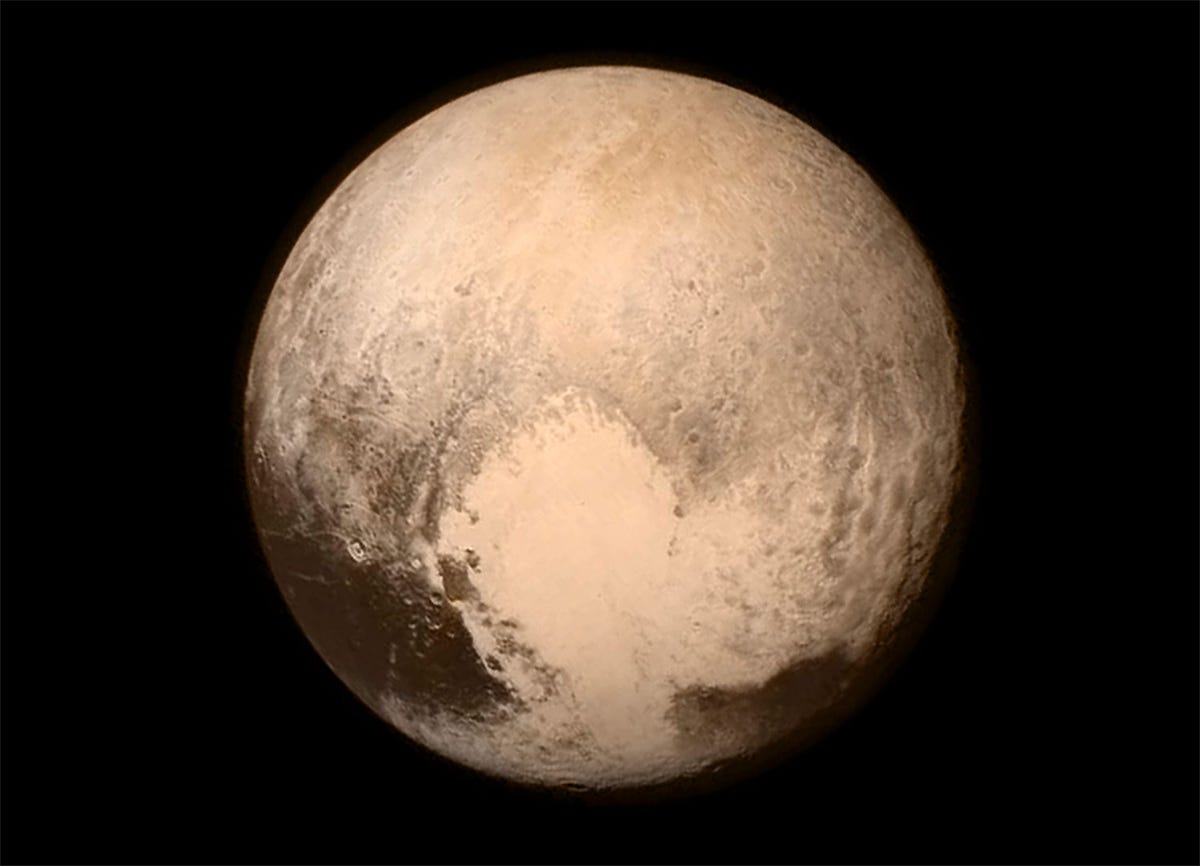Best science stories of 2015 (pictures)
Alzheimers research, human brain-to-brain communication, water on Mars. Here are some of our favourite scientific achievements for 2015.

Up close with Pluto
After nearly a decade in transit from Earth, Pluto probe New Horizons finally arrived at its destination in July of this year. The sensors on board collected information about the dwarf planet at the solar system's edge in one mission than had been found in all the decades prior.
Extraterrestrial water
2015 marked the year scientists confirmed the existence of liquid water outside of Earth. Saturn's moon Enceladus is home to a vast ocean underneath its icy crust, and researchers have found the best evidence yet that salty water still flows on Mars, even if nothing can examine it closely yet.
Quantum entanglement loopholes closed
Researchers have been conducting quantum entanglement experiments for 50 years. This year, researchers claim to have conducted these experiments while closing multiple loopholes, proving the phenomenon more conclusively than ever before.
Glowing fingerprints
After being robbed, Australian scientist Kang Liant developed a liquid that makes fingerprints glow under blacklight, a forensic technique far more efficient and accurate than dusting.
Animals thrive in Chernobyl
It's been nearly 30 years since the nuclear power plant disaster in Chernobyl Ukraine. A long-term study has found that animal populations are thriving in the human-free exclusion zone, with numbers increasing consistently since 1987, and animals adapting to radiation exposure.
Ultrasound used to noninvasively treat Alzheimers
A team of Australian researchers were able to restore memory function in mice by using ultrasound to break down the amyloid plaques responsible for the loss of cognitive function in Alzheimers syndrome. The excited scientists called the achievement a "breakthrough."
Paralysed man walks
Unlike other brain interface mobility solutions, a new one tested by the University of California, Irvine doesn't use an exoskeleton, but instead transmits thoughts using an EEG cap via electrodes on the muscles. Using this system, a paralysed man walked 3.66 metres (12 feet) on his own legs.
The search for Nefertiti
Work commenced on a new radar exploration of the tomb of ancient Egyptian pharaoh Tutankhamun after evidence pointed to a hidden chamber. Expert Nicholas Reeves believes that the hidden chamber, now all but confirmed, could be the lost resting place of queen Nefertiti, Tutankhamun's mother.
New human found in Africa
The evolution of humanity is not a complete picture. In fact, it has a lot of gaps. The discovery of a new extinct hominid named Homo naledi in Africa appears to be an early member of the Homo genus, filling out the family tree.
Robot demonstrates self awareness
A big milestone for artificial intelligence will be a robot that can recognise itself as an individual, distinct from other units. Roboticists at the Rensselaer Polytechnic Institute AI and Reasoning Lab in New York were able to demonstrate a robot with self awareness by tasking three robots with a logic puzzle that required recognition of individuality in order to find a solution.
Google's Deep Dream
Google's image recognition software uses a form of artificial intelligence to recognise images. It turns out that when you tweak the setting to their most sensitive, the result is a series of really tripped out, surreal images containing lots and lots of dogs.
Scientists create lab-grown limb
Using the vascular and nervous matrices of a rat, researchers were able to effectively grow an entire new limb. When tested, the cells functioned normally.
Giant survey discovers thousands of new ocean microbe species
Three years of collecting ocean samples and 160 scientists around the globe combined to create the most comprehensive survey of microbial ocean life to date.
Hubble turns 25
In April of 1990, the Hubble Space Telescope commenced operations in orbit around Earth. This year, we celebrated 25 years of Hubble imagery helping to study space.
Mysterious space signals turn out to be microwave noodles
At the Parkes Radio Telescope in Australia, a team of researchers found the source of a mysterious signal that had been puzzling them for years. As it turned out, it was not extraterrestrial at all, but microwave ovens on the facility being opened before the timer was finished.
The Great Bacon Cancer Debacle
It's been known for some time that processed meats are on the carcinogenic side, but the western world erupted into a furore when the World Health Organisation weighed in on the debate, officially declaring a causal link between processed food and colorectal cancer.
How the brontosaurus got its genus back
Over 110 years ago, in 1903, the brontosaurus was officially cancelled and merged with similar species apatosaurus. This year, a team of researchers had announced, after studying 81 skeletons, that there were enough differences between the two for brontosaurus to stand on its own four legs once again.
Science unboils an egg
Announced in December, and awarded the Ig Nobel Chemistry Prize, was a technique developed in Australia to detangle the proteins of a cooked egg. This sounds silly, but it could provide a way to more cheaply manufacture cancer treatments.
Human minds link to play 20 questions
The work of University of Washington's Andrea Stocco in noninvasive human brain-to-brain communication over distances has been moving forward in leaps and bounds. This year, participants played a modified game of 20 Questions with 72 percent accuracy, purely by thinking at each other using EEG caps.
Critically endangered ferret population increased
The black-footed ferret of North America, officially considered critically endangered, was successfully reproduced using sperm samples frozen over 20 years ago. This was the first time genetic material over 20 years old was successfully used in this way, introducing fresh genetic material into a declining population and providing greater hope for endangered species in the future.

